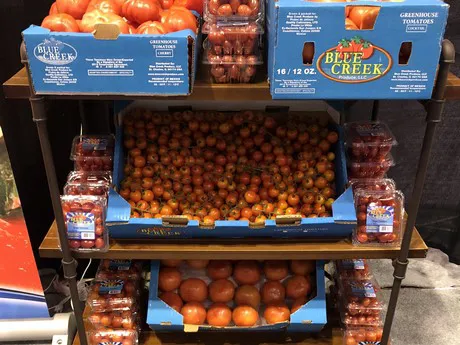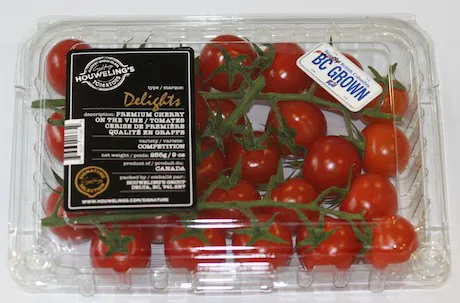As North America undergoes the crossover from winter tomato production to spring, supplies look good and are expected to build.
“When it comes to field-grown tomatoes, South Florida still has product. They’re going to start their spring crop within the next 10 days as they finish up their down south crop. The spring crop goes until June so it’s a short season,” says Roger Riehm of Bradenton, Fl.-based Blue Creek Produce LLC.
 Photo: Blue Creek Produce LLC.
Photo: Blue Creek Produce LLC.
At the same time, regions such as Nogales, Az. are finishing up tomatoes and Mexico also continues its production. “Mexican supplies are okay. Not great numbers here. There are limited supplies as far as Romas and round tomatoes,” adds Riehm.
Greenhouse kicks off local produce
On greenhouse tomato production, David Bell of Houweling's Group headquartered in Delta, B.C., notes that production in Mexico is likely to go until the middle of May. And in the meantime, domestic production is building. “Production is year-round so as the days go longer, production increases. So overall availability on tomatoes is on the rise,” he says.
Blue Creek’s Riehm adds though that in terms of Mexico, border issues are making it challenging at times to bring product in. “We’re fighting getting stuff across,” says Riehm. “There are delays at the border with crossings. I think we have a lot fewer border agents because they’re being diverted to different places because the administration has a higher agenda. So they’re grabbing some of the agents who are crossing produce and there are longer lines. We have to expect an extra day for product to cross than it normally would.”
Demand building
Meanwhile, demand for all types of tomatoes is good, but again building as the nicer North American weather heads into barbecue-and-salad season. In BC, Bell notes that greenhouse tomatoes mark the beginning of local produce arriving. “There’s a lot of excitement in the produce department for the first of the season harvests,” he says. “It’s been slowly coming in throughout the last four weeks and that starts the motion of the local items in BC.”

Photo: Houweling's Group.
In terms of pricing on tomatoes, pricing is currently steady. “Supply and demand are somewhat even. I think pricing reflects demand and there’s no shortage. It looks similar to last year, maybe 10-15 percent higher,” says Riehm.
With greenhouse, Bell notes that this time of year, tiered pricing tends to be seen more often. “As the shoulder season continues, we’ve got a larger bandwidth of pricing. The locally grown product is going carry greater value, especially when tied to major programs,” he says. “And if you’re holding onto product for a little longer or don’t have strong partnerships to continue flow on imported product, it creates more of a tiered pricing structure, where age and origin of the product determines where within the bandwidth the pricing lands.”
Looking ahead, domestically Northern Florida is beginning its production. “I think Florida is a little behind. Generally they start to kick in on spring crop as it gets closer to full moon so things are 7-10 days away from the North crop starting,” says Riehm. “Things are short right now as they’re finishing up the Immokalee and Homestead deals. The quality is fair to good. Weather will also have a factor as we get closer—what is the weather like the next 10 days?”
Watching Suspension Agreement negotiations
And whether it’s greenhouse or field, tomato growers are all looking ahead at May 7th on the calendar. Mid February, the U.S. Department of Commerce announced a withdrawal from the Tomato Suspension Agreement, a move that could result in higher costs, including a 17.65 percent tariff, on tomatoes for Mexican tomato growers. “There’s a lot of tension around this—everybody is watching May 7th,” says Riehm.
For more information:
Roger Riehm
Blue Creek Produce
Ph: +1 (630) 513-3075
roger@bluecreekproduce.com
www.bluecreekproduce.com
David Bell
Houwelings Group
Tel: +1 (604) 946-0844
david.bell@houwelings.com
www.houwelings.com
